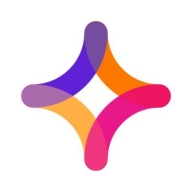

Jitterbit Harmony and AWS AppSync are key players in the integration platform market. AWS AppSync stands out due to its advanced features, appealing to users seeking robust capabilities, while Jitterbit Harmony offers competitive pricing and strong customer support.
Features: Jitterbit Harmony provides an intuitive drag-and-drop interface, seamless integration capabilities, and simplifies complex tasks. AWS AppSync supports real-time data subscriptions, a serverless architecture, and offers a comprehensive feature set for scalable applications, providing it a technical edge.
Ease of Deployment and Customer Service: Jitterbit Harmony offers a straightforward deployment process with excellent customer support, reducing setup time. AWS AppSync may require more technical expertise but benefits from AWS’s extensive resources and community support, serving self-reliant teams well.
Pricing and ROI: Jitterbit Harmony presents a cost-effective solution with competitive setup costs and strong ROI, appealing to those wary of high initial expenses. AWS AppSync, despite being more costly upfront, delivers long-term scalability and feature benefits for those prioritizing feature depth.


AWS AppSync simplifies application development by letting you create a flexible API to securely access, manipulate, and combine data from one or more data sources. AppSync is a managed service that uses GraphQL to make it easy for applications to get exactly the data they need.
With AppSync, you can build scalable applications, including those requiring real-time updates, on a range of data sources such as NoSQL data stores, relational databases, HTTP APIs, and your custom data sources with AWS Lambda. For mobile and web apps, AppSync additionally provides local data access when devices go offline, and data synchronization with customizable conflict resolution, when they are back online.
Jitterbit Harmony is a comprehensive platform for data integration and API management, enabling seamless synchronization and automation across cloud-based and on-premises applications.
Users leverage Jitterbit Harmony to integrate systems like ERP and CRM applications, simplifying complex data workflows and enhancing automation. It supports efficient data migration and ensures smooth connectivity, handling diverse integration needs and helping streamline business processes. Users emphasize its drag-and-drop functionality and extensive templates, which contribute to its robust performance. However, improvements are needed in data mapping, error message clarity, and documentation, especially when dealing with large data volumes.
What are the key features of Jitterbit Harmony?Companies across retail, manufacturing, healthcare, and finance sectors use Jitterbit Harmony to integrate critical applications and automate workflows. In retail, it connects inventory systems with sales platforms, reducing manual effort. Manufacturers sync their ERP systems with supply chain software, optimizing operations. Healthcare organizations integrate patient management systems with insurance databases, streamlining patient care. Financial institutions use it to connect accounting software with banking systems, ensuring real-time financial data exchange.
We monitor all Cloud Data Integration reviews to prevent fraudulent reviews and keep review quality high. We do not post reviews by company employees or direct competitors. We validate each review for authenticity via cross-reference with LinkedIn, and personal follow-up with the reviewer when necessary.